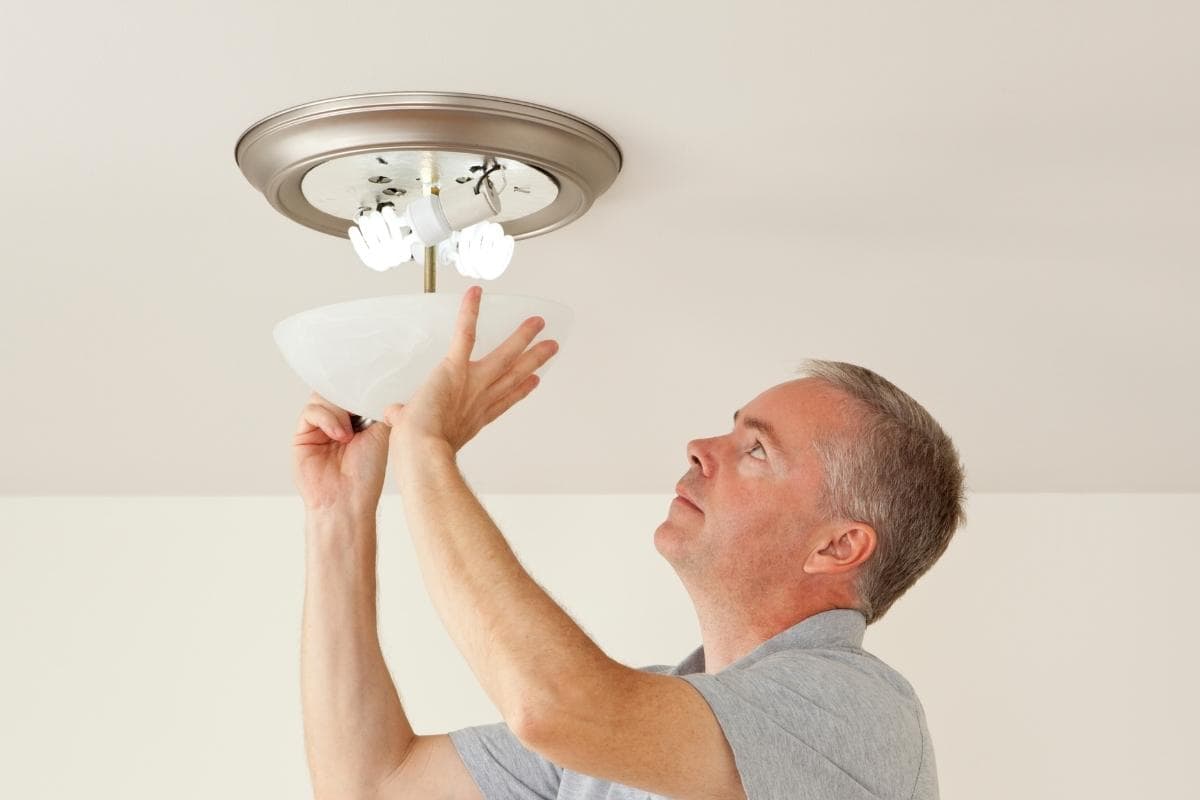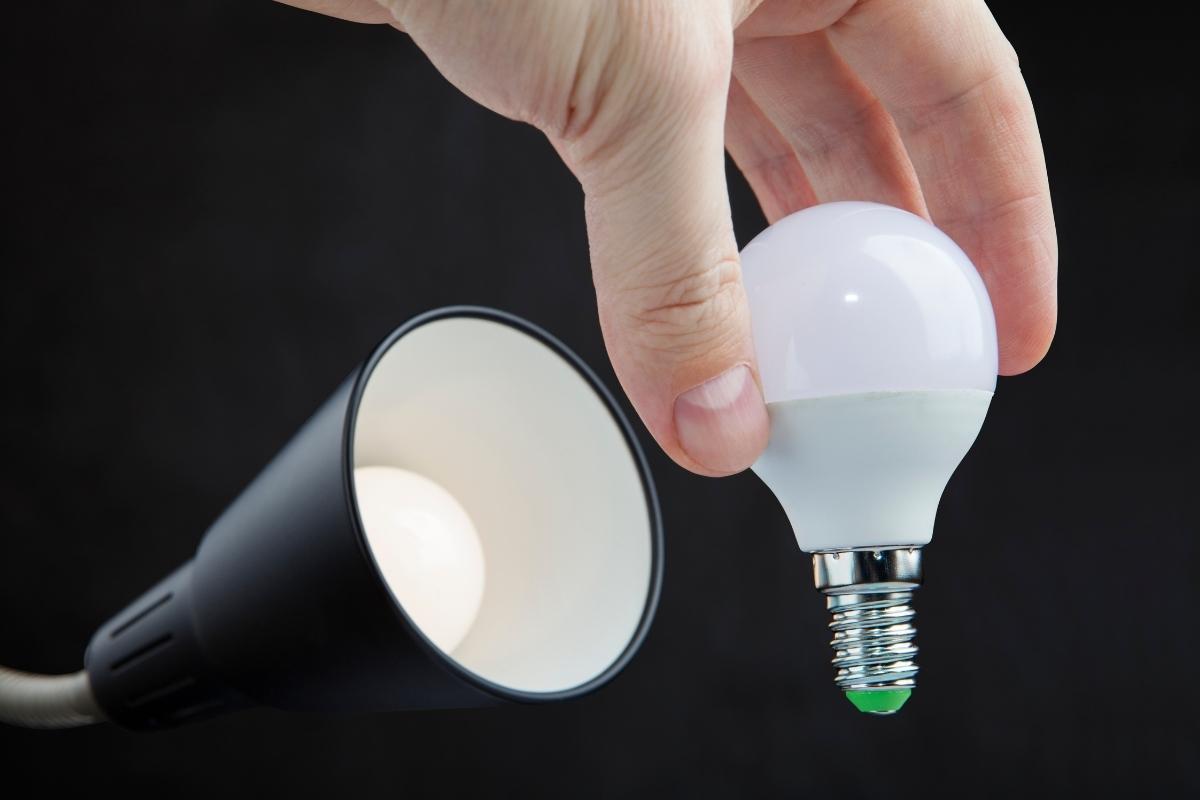If you’re experiencing a flickering light at home, you’re most likely to be a little bit frustrated or anxious. Flickering lights are a common problem, but they can be very annoying and mess up your moods. There are a number of possible causes of flickering lights at home. Some are easy to fix, while some can be serious safety issues that you need to address quickly.
What Causes Lights to Flicker and How to Fix Them
Here are all possible causes why lights are flickering in your house and how to fix them.
We’ll go through the most common and easy fixes first. These are usually the causes when you find one or two individual lights flickering.
Loose Bulb
Loose light bulbs will receive an inconsistent power supply from the sockets, which can cause them to flicker. When you occasionally notice one or two isolated flickering lights, the loose bulbs may be the most direct cause.
The fix is obvious and simple. Turn off the power and wait for the bulbs to cool down completely before touching them. Tighten and screw in the bulb firmly. Make sure the bulb has proper contact with the socket. Then turn your light back on to see if it fixes the flickering.
Loose Plug
If you notice one or two isolated lamps or light fixtures are flickering, it’s also possible that the lights themselves are also suffering from a loose connection, such as a loose plug. Even recessed lights may have loose connections. Make sure all the obvious and basic connections are tightened.
Check the plug of your lights to ensure they are not loose in the outlet. Bent metal prongs may also cause the plug to come loose in the outlet. Unplug it, pry the prongs open, and plug it back in to see if it fixes the flickering.
Loose Wiring
Loose wiring, outdated wiring, damaged wiring, corroded wires, or wiring with incorrect installation can cause a flickering light. Loose wiring is a potential fire hazard that can cause electrical arcing and overheating and should be taken seriously. Loose wirings can also make your flickering get steadily worse. If you have tried other methods that don’t work and find the flickering issue is getting worse. Loose wiring is possibly the cause.
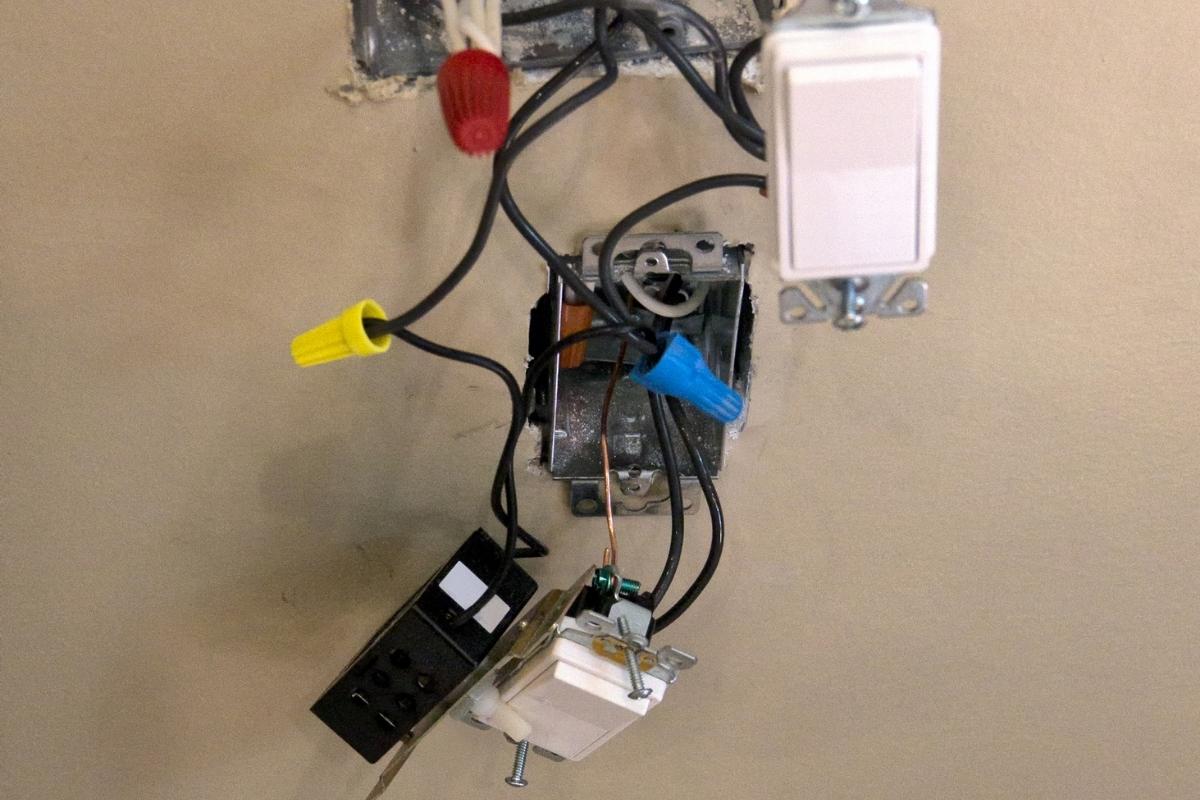
Loose wiring can happen anywhere in your house. It may happen in your wall switch, lamp, light fixture, circuit breaker, main electrical panel, worn connectors, or wires hidden in your walls. It’s hard to identify the issue so call for a professional electrician to take a look at the wiring in your entire house. You can ask them to search for other electrical system issues as well.
Old Faulty Bulb, Switch, and Fixture
One of the most common reasons for a flickering light is that your light bulb is simply aged, damaged, broken, or at the end of its lifespan. Switch the flickering bulb with a new working one to see if the flickering goes away.
If the flickering continues, the lamp, light fixture, or light switch might also be faulty. Try replacing them with a new fixture or light switch and test again for flickering.
LED Flickering With Residual Electricity
Among all types of light flickering, LED flickering is the most common one because LED bulbs are very energy efficient and only need little power to flash. The residual electricity left in the circuit is too small to keep a LED from continuously glowing but enough to cause it to flicker or flash. In contrast, the residual electricity cannot trigger an incandescent/halogen bulb to even glow a bit.
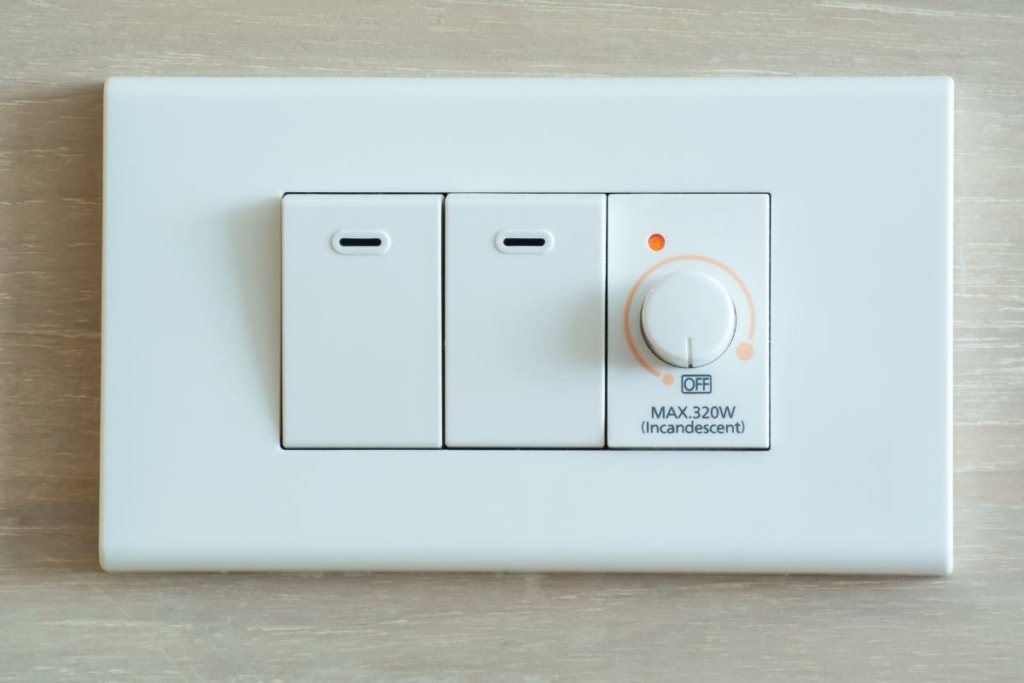
The residual electricity left in the circuit should go to the ground, but there are several reasons why it stays. Residual electricity can be caused by electromagnetic induction, incorrect Wiring, and mostly leakage current from the switch. Most smart switches need a holding current for standby power that leaks to the LED even when it’s turned off, such as a dimmer, a motion sensor switch, a WiFi-controlled switch, or a switch with an indicator light or night light.
Common methods to solve LED light flickering are using a smart switch with a neutral wire, adding a bypass capacitor, or inserting a small halogen or night light.
LED Flickering With a Dimmer Switch
Light flickering usually happens when using a dimmer switch with incompatible bulbs. First, the bulb itself should be dimmable. If you use a non-dimmable bulb with a dimmer switch, the light may start to flicker, buzz or function incorrectly.
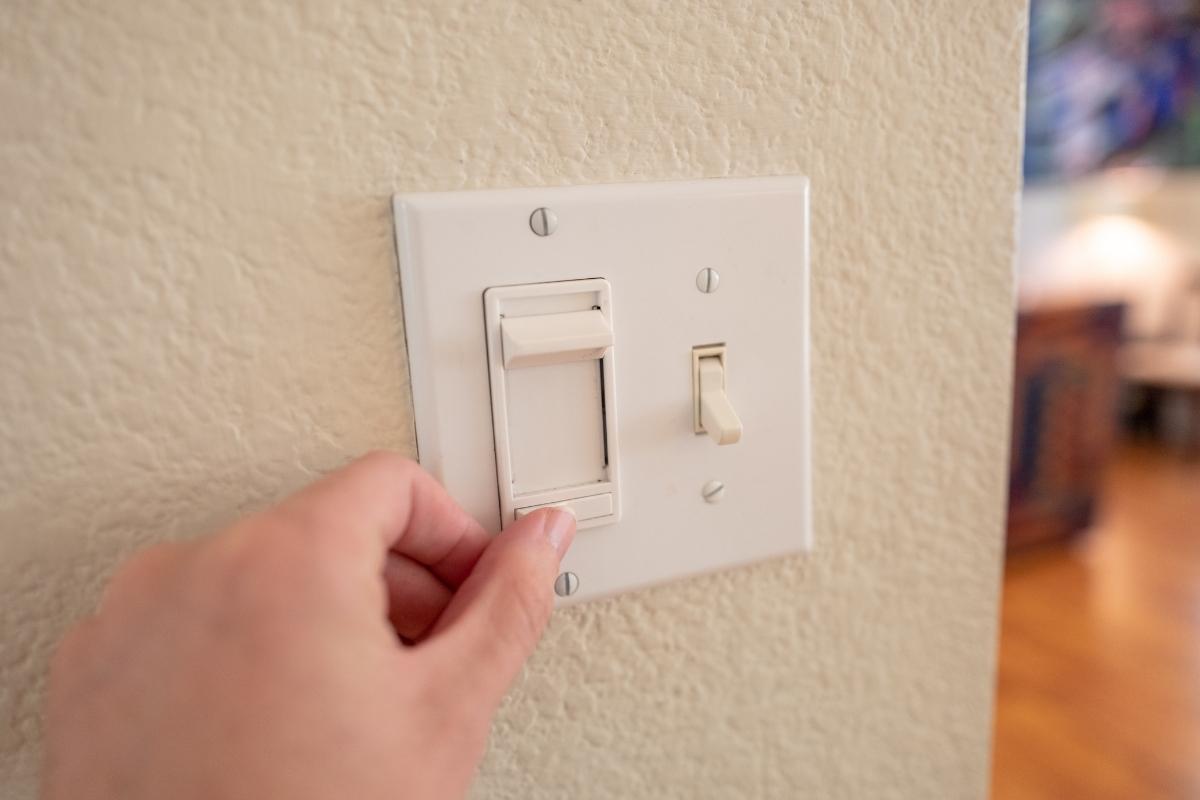
Second, the bulb type should be compatible with the dimmer switch. Check the compatibility listed on your dimmer switch. Using non compatible dimmer switches and bulbs may usually cause flickering and buzzing. An old dimmer switch is mostly designed to work with incandescent bulbs and won’t work well with LED or CFL bulbs, which will mostly cause them to flicker. This usually happens with LED bulbs because LEDs are very sensitive to voltage changes.
Besides, a LED light might flicker when the dimmer is set on a low dimming level. Usually it’s not dangerous but it means the bulb or dimmer switch is not qualified to handle low-level dimming. Adjust the low-end light level of your dimmer or upgrade the bulb or dimmer switch to see if the flickering goes away.
Why Are Fluorescent Lights Flickering
If your fluorescent bulb is flickering, usually it’s because the bulb itself or the starter(ballast) is bad. Take a look at the bulb, and if it’s dark on either end of the tube, the bulb may be burned out. To quickly address the issue, switch the fluorescent to a working bulb to see if it stops flickering. This can be a quick fix.
The flickering could also happen when the light is warming up in cold weather. When the temperature of the fluorescent bulb is too low, the bulb may tend to flicker because it cannot generate enough heat to glow.
Flickering When Switching on Large Appliances
If your light only flickers shortly when you first switch on a large, high-wattage appliance, it’s usually not a big problem because large appliances like air conditioners, washing machines, or corded vacuums can draw a lot of current when they turn on. They draw a lot of current than your circuit can handle which may cause the light to flicker temporarily.
Infrequent, temporary flickering is usually not a concern if it only happens when they first kick in. You can also diagnose which appliance causes the flickering by turning them on one by one. If the light keeps flickering after the appliance has already been turned on for some time, it can be a circuit overload.
Circuit Overload
When your light has a constant flickering after you’ve turned on some large appliances, your electrical circuit is probably overloaded and is running too many amps exceeding its rated load. Circuit overload may result in overheating, burnout or fire. It can happen especially in older houses with inadequate wiring and malfunctioning electrical panel that doesn’t meet the power requirements of modern appliances.
Circuits are made up of wiring, breaker and devices(light fixtures, appliances). You can try to pinpoint the problem by plugging something else that runs on a similar number of amps into the circuit instead of the existing appliance. If the light still flickers, it could be a circuit overload. Or maybe the appliance itself is broken which causes the flickering. You can try to plug the appliance into other circuits to see if the problem still exists. Better call a licensed electrician to help fix an overloaded circuit.
These are usually the causes when the lights in your whole house are flickering. When encountering this, it’s usually because of housewide electrical issues. Call a licensed electrician to locate and solve the problem below.
Voltage Fluctuating
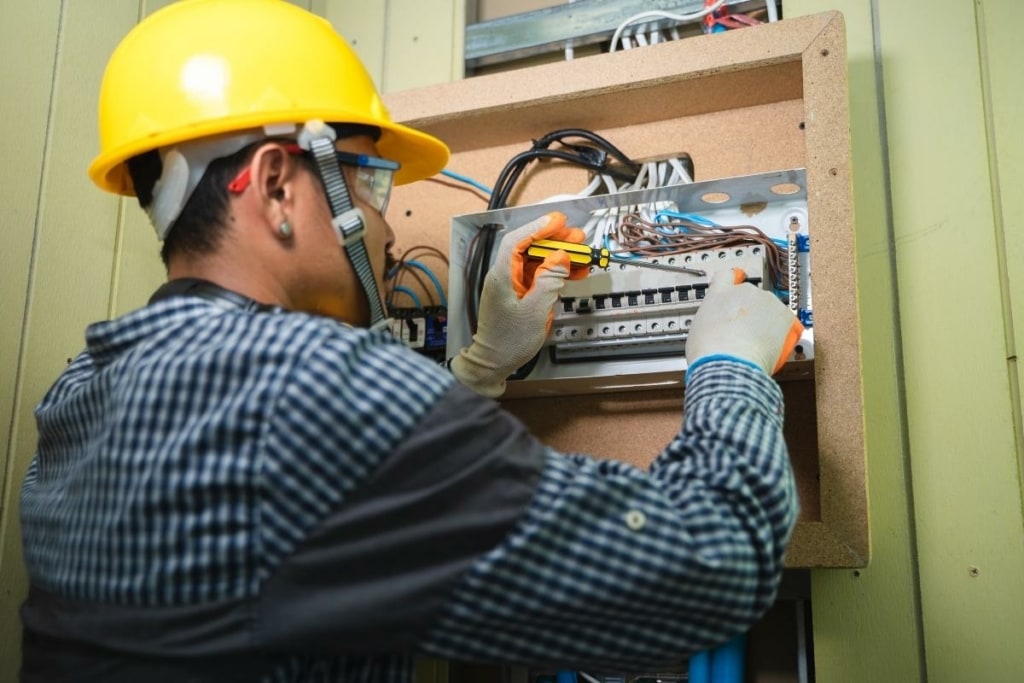
Poor quality or fluctuating power supply can often cause power surges, spikes, and voltage fluctuations. Voltage fluctuations can cause flickering lights in your whole house. Minor voltage changes are normal, for instance, lights flickering shortly when you turn on a large appliance. But abnormal voltage changes can be dangerous and can damage electronics or cause an electrical fire. It can also cause lights randomly flickering, light flickering when they are turned off, bulbs to burn faster, and appliance malfunction. Voltage fluctuation may get worse over time.
Loose or corroded connections in the house, powerlines, overloaded circuits, or small conductor wires can all cause voltage fluctuations. Voltage Fluctuating is usually the possible cause when you find the flickering persists. When you think you have a voltage fluctuating problem, consult a licensed electrician to diagnose the issue.
Main Electrical Service
If your lights are flickering inconsistently or in several areas of your house, there could be an issue with the main electrical service panel, main service cable, meter connection, or breaker box. A bad or overloaded breaker can cause your light to flicker.
Neighborhood Transformer
If your neighbor is using a lot of electricity sharing the same transformer as your house, you may encounter lights flickering.
Utility Service/Power Grid
Sometimes the problem is not within your house. The power grid or your local utility service may cause voltage fluctuation. For example, you may encounter a voltage fluctuating during they are servicing the electricity or in bad weather.
Are Flickering Lights Dangerous
Not all flickering lights are imminently dangerous. Simple flickering causes such as a loose or bad bulb can be easily fixed by tightening or replacing the bad bulb. However, if these simple steps cannot fix the flickering, this may be due to serious issues such as loose wiring or circuit overload, which can be a potential disaster. Moreover, these issues can get worse over time. Always call an electrician to take care of these types of issues just to be safe.
Don’t do it yourself if you are not experienced with electricity. You may get seriously injured with an accidental shock, cause a fire, or even a bigger problem by fixing them by yourself.
Are Lights Flickering in the House a Fire Hazard
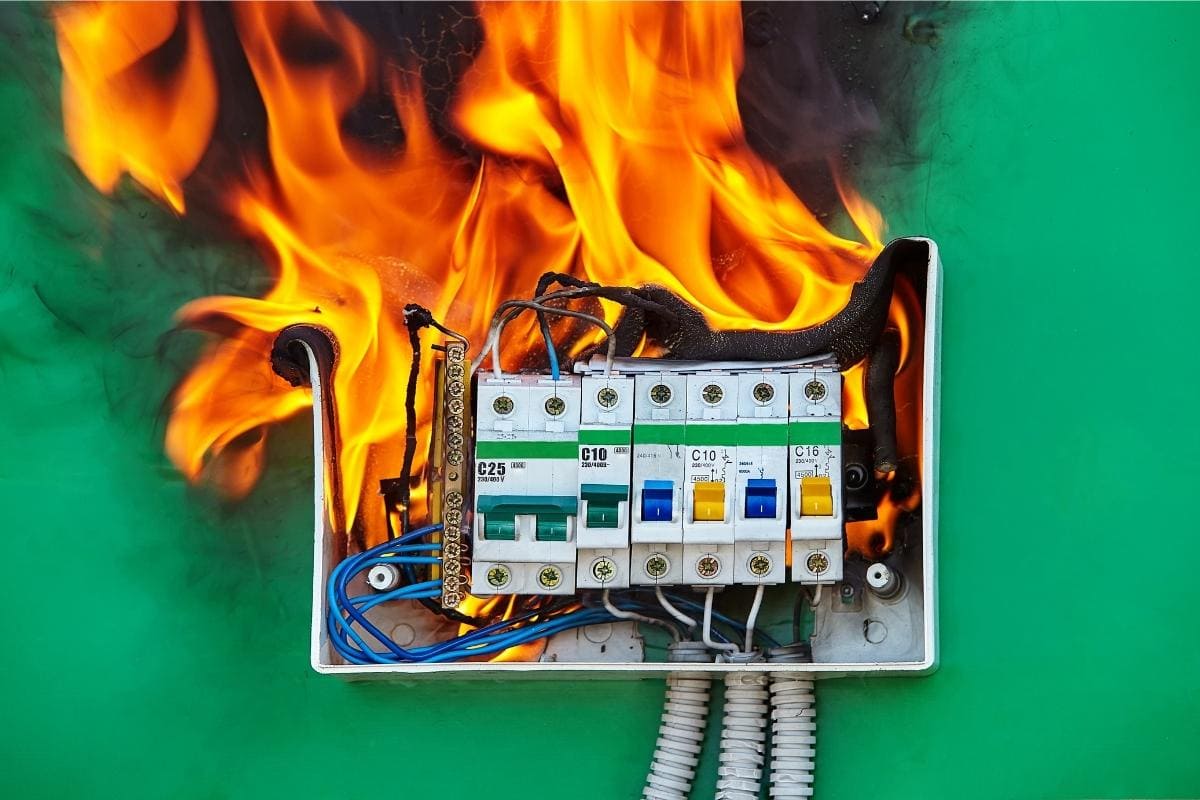
Yes, flickering lights can be a fire hazard in your home. Flickering lights may be a sign of loose wiring, defective wiring, outdated wiring, overloaded circuit, corroded wire, etc, which are all potential fire hazards that can cause electrical arcing and overheating, eventually a fire, and should be taken seriously.
According to NFPA(National Fire Protection Association), the wiring and related equipment is responsible for 68% of the home fires involving electrical distribution and lighting equipment each year in 2015–2019.
Get Advice From a Professional
Though flickering lights are a common issue, and many of you have already encountered a flickering light sometime in your life, they may be a symptom of a bigger and more serious problem.
If simple fixes cannot fix the issue, always consult and get help from a professional, licensed electrician to take a full inspection of your house to locate the hidden causes, to prevent a potential fire.

